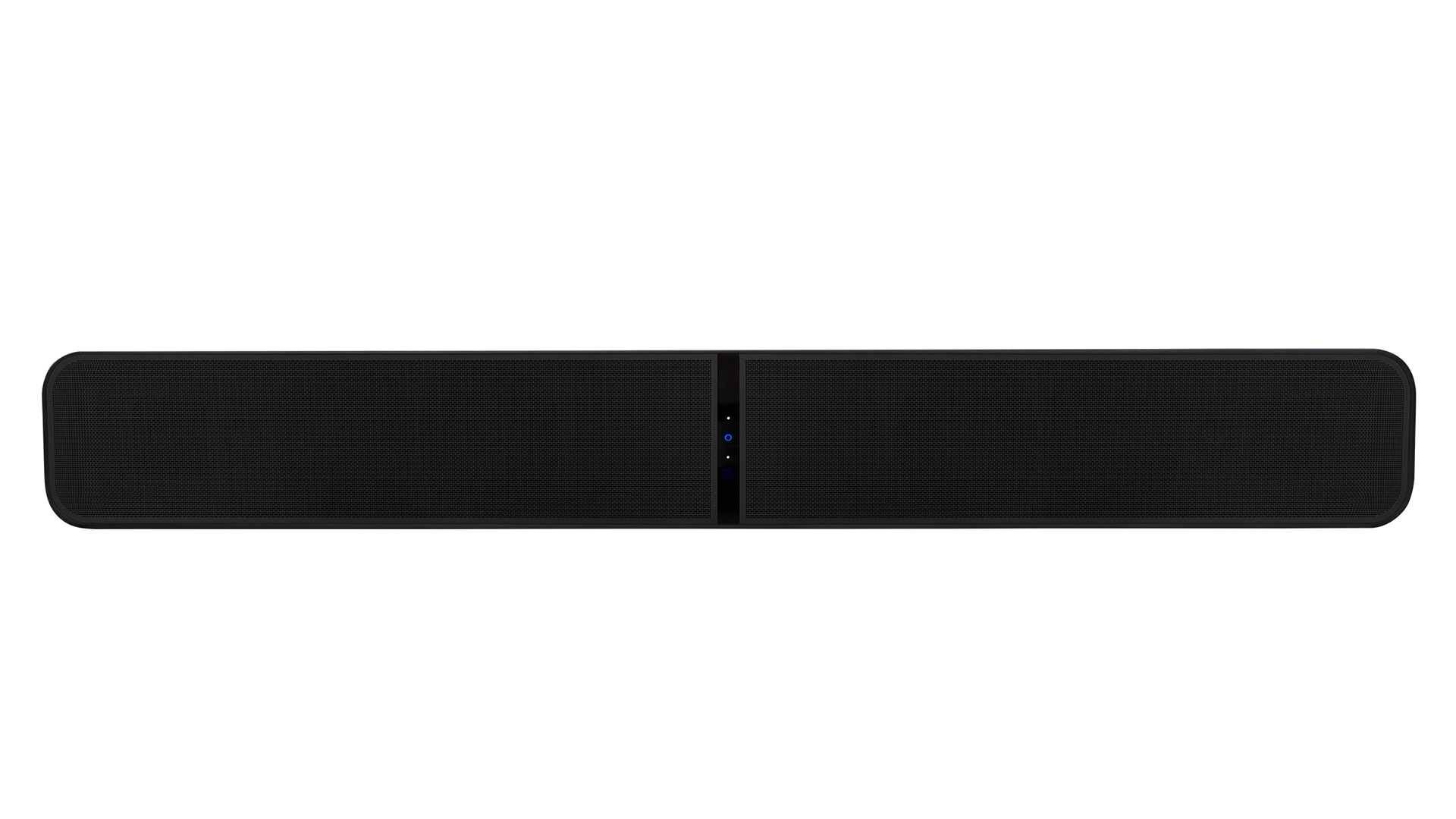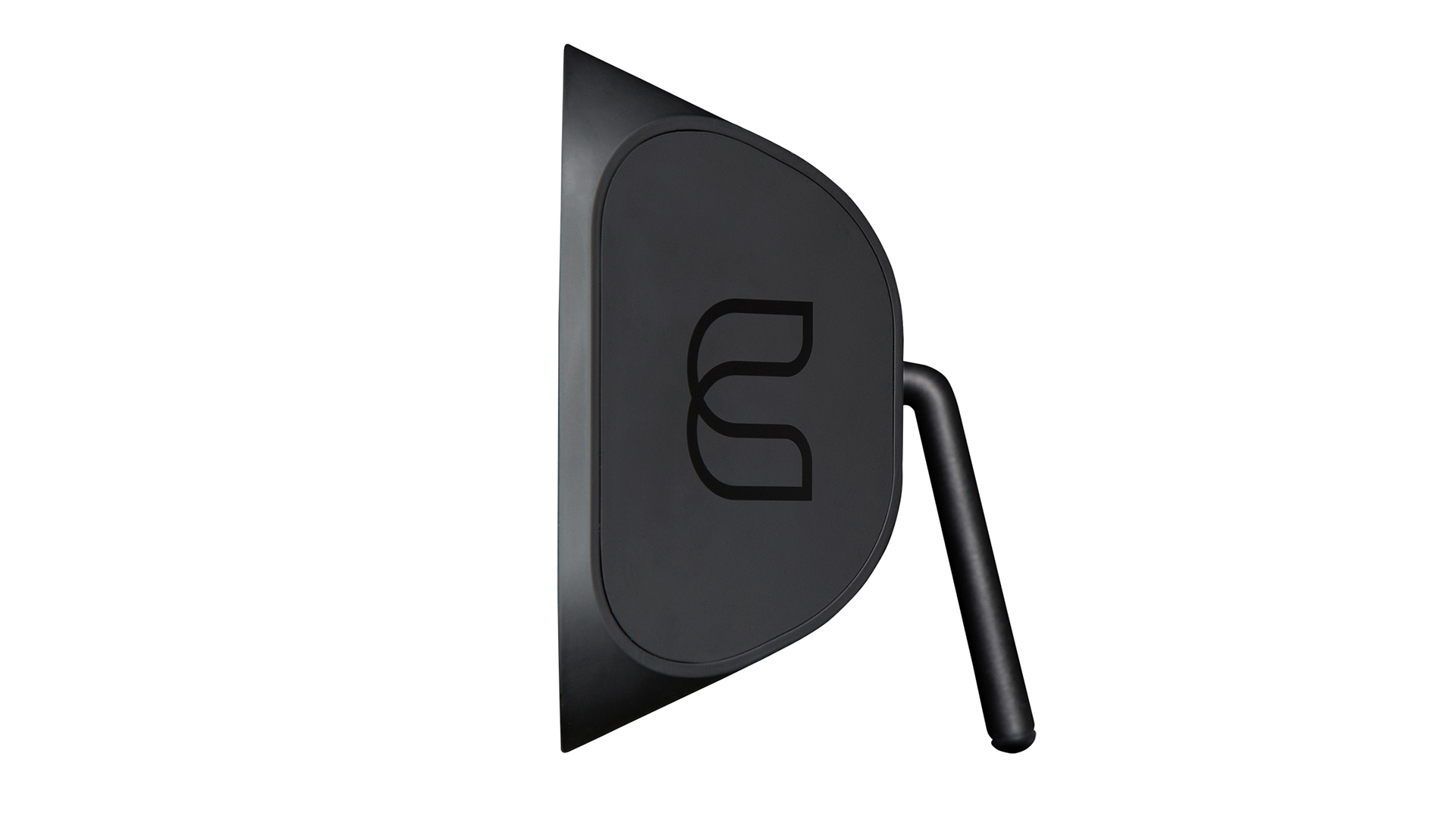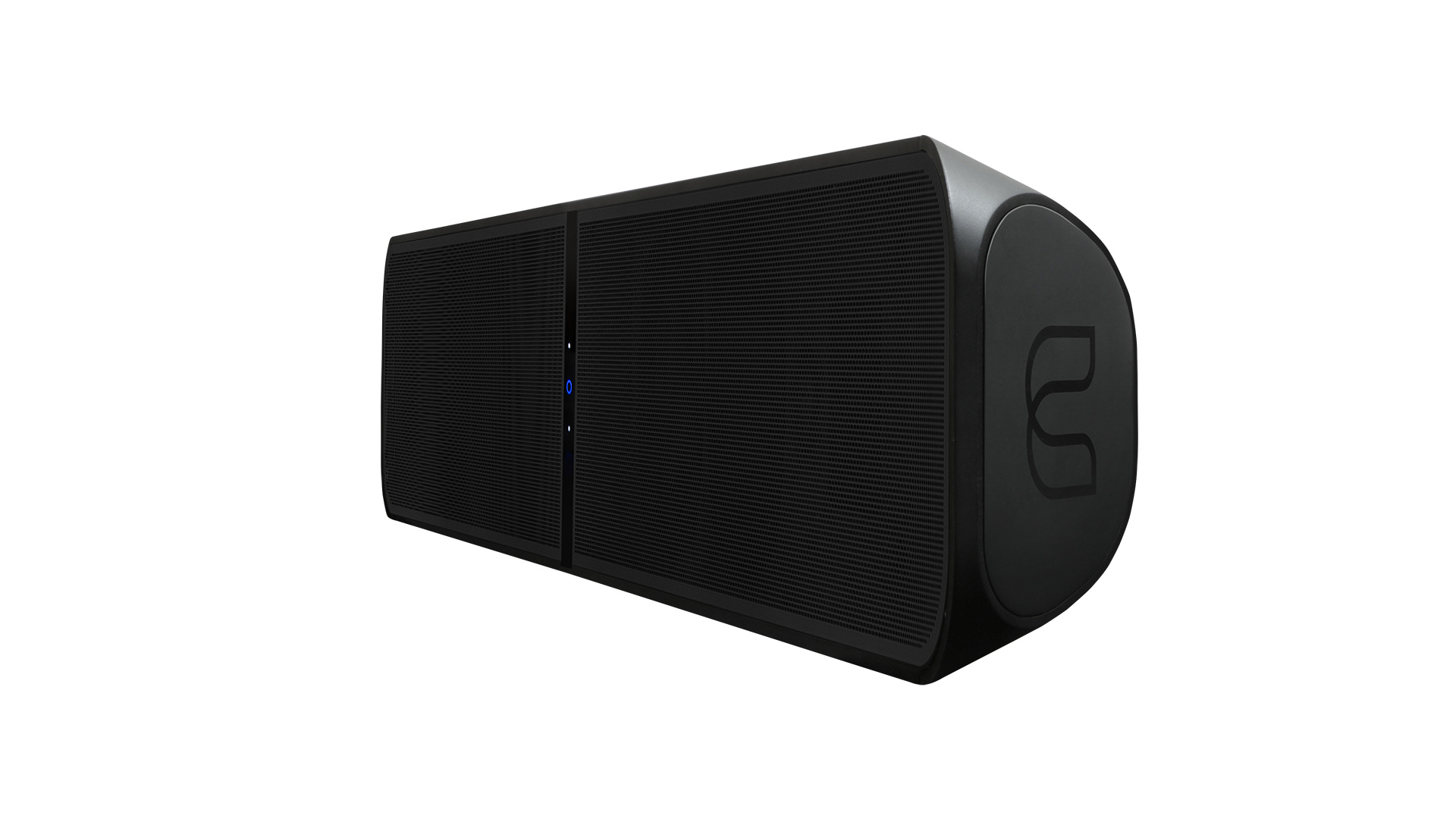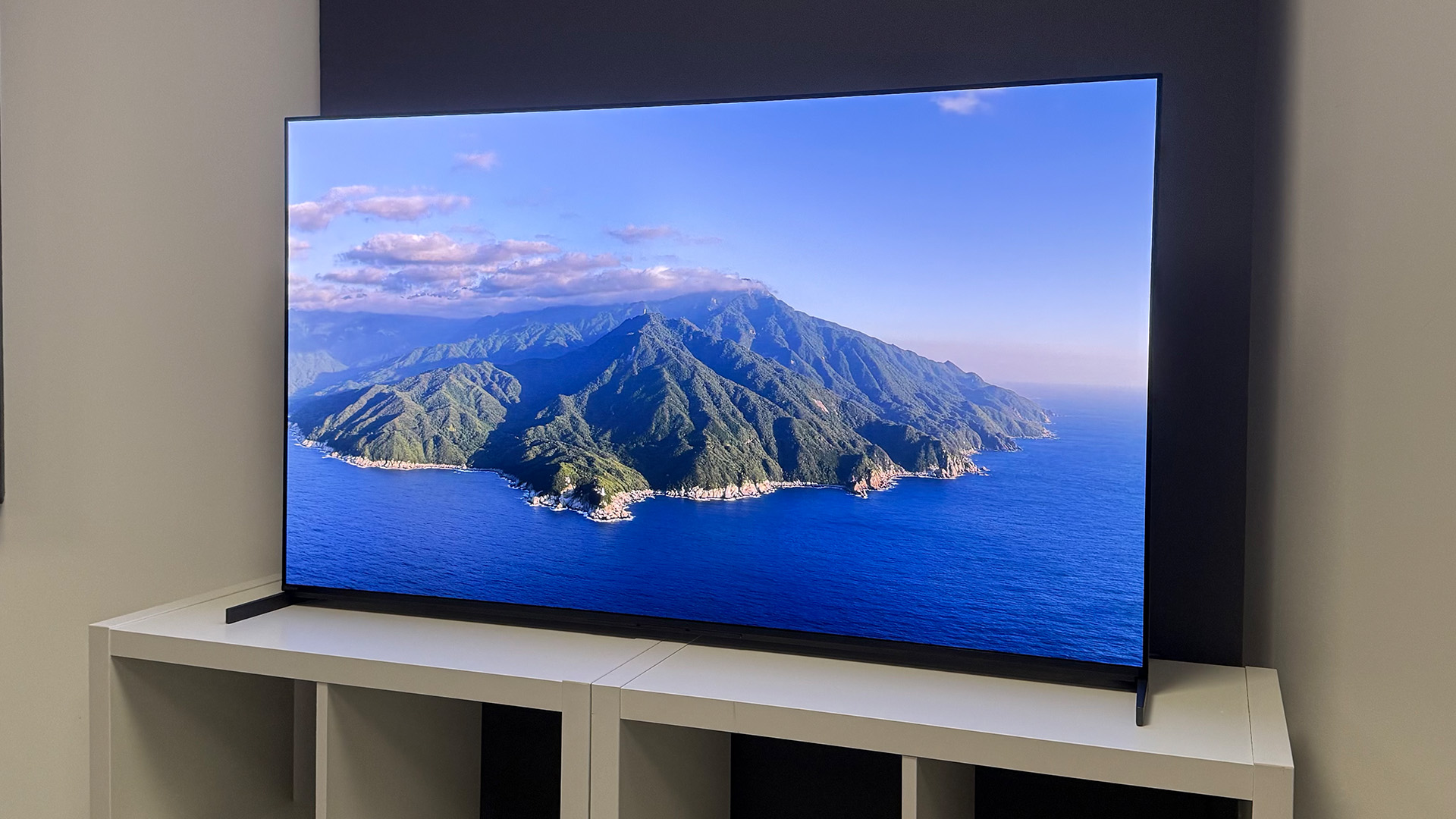What Hi-Fi? Verdict
While not as musical as anticipated, the Bluesound Pulse Soundbar+ deftly handles virtual Dolby Atmos with precision and directness
Pros
- +
Satisfying Dolby Atmos delivery
- +
Direct and solid presentation
- +
Detailed, open sound
Cons
- -
Music lacks drive and drama
- -
No 'native' sound mode
- -
No auto-detect of HDMI input
Why you can trust What Hi-Fi?
As the computing inside our AV technology advances to the extent that software updates are frequently more impactful than hardware ones, the launch of a new product, rather than being the conclusion of its development, is often just the beginning of a long road of firmware updates until either processor capacity, or the engineers, are exhausted.
Bluesound’s Pulse Soundbar+ is the company’s first Dolby Atmos soundbar and is a prime example of this phenomenon, having launched back in March 2021 but only gaining its fundamental upgrade to handle virtual Dolby Atmos decoding eight months later.
Build

Although outwardly the Bluesound Pulse Soundbar+ bears more than a passing resemblance to its predecessors, internally there has been a significant change, and one that we presume will be a source of yet more improvements. The soundbar now sports a custom-specified ARM Cortex A53 quad-core chipset that the company says processes audio up to eight times faster than previous generations and, most importantly, can handle Dolby Atmos.
In terms of build, though, you’d be hard pushed to spot the difference between the Bluesound Pulse Soundbar+ and its forebear, the Soundbar 2i. There is now a new centre strip on the front face with touch controls for volume and power, though, and either side of this sits a pair of 25mm tweeters, 5cm midrange drivers and 10cm woofers, with a matching passive radiator behind a tight aluminium grille. All the drivers are front-facing and, being larger in diameter than those in most competing models, give the Pulse Soundbar+ its distinctive slim, tapered-but-tall build.
It’s a design consistent with previous models that, unfortunately, will be an instant turn-off for some potential buyers. There’s no getting around it: at 14cm high, Bluesound’s soundbars are taller than your average soundbar and, when placed on the same surface as a TV, will almost certainly block part of the screen. Bluesound is well aware of this and really intends for the Soundbar+ to be wall-mounted – there's a bracket included in the box for this purpose and, to keep the installation tidy, the soundbar can be orientated with the cable cove at either the bottom or the top, with an internal accelerometer automatically sensing which way up the 'bar is.
Features

This recess at the rear includes inputs for HDMI eARC, optical, 3.5mm analogue and USB A, as well as an ethernet port and RCA output for an external sub. The Bluesound Pulse Soundbar+ can also connect wirelessly, via a dedicated wi-fi module, to a pair of Pulse Flex 2i speakers for surround sound and/or a Pulse Sub+ for extra bass.
There’s streaming onboard courtesy of Apple AirPlay, two-way aptX HD Bluetooth and the BluOS wireless system that integrates with services including Tidal and Spotify. The Soundbar+ supports hi-res audio file formats, and Bluesound is keen to stress its musical chops, insisting that it's equally capable with both film and music.
The latest hi-fi, home cinema and tech news, reviews, buying advice and deals, direct to your inbox.
Priced at £799 / $899 / AU$1699 in black, the Pulse Soundbar+ just undercuts its main rival, the What Hi-Fi? Award-winning Sonos Arc (£899 / $899 / AU$1499) – unless, that is, you want it in white, in which case the Bluesound will then set you back £899 / $999 / AU$1799. While the Soundbar+ and Arc are both wi-fi-enabled soundbars that can be grouped with their respective brand's smart speakers as part of an integrated multi-room set-up, the Sonos has dedicated upward-firing speakers while the Bluesound does not.
As mentioned, the Pulse Soundbar+ can be expanded by the addition of two Pulse Flex 2i speakers (£299 / $299 / AU$ 699) and a Pulse Sub+ (£749 / $749 / AU$ 1399), also available in black or white, while Sonos’ optional extras include its One SL speakers (£358 / $358 / AU$538 per pair) and a Sub (£749 / $749 / AU$1499).
Going all-in on either of these surround packages is a relatively pricey undertaking, and both Samsung and LG’s flagship packages include separate surrounds and subwoofers for less. However, like other premium manufacturers, Bluesound’s soundbar is designed to perform well in a standalone set-up, which is how we tested it – once we’d got creative with our TV cabinet. If wall mounting isn’t an option, but your TV sits too low to clear the Pulse Soundbar+, Bluesound sells a universal TV stand, the TS100 (£279 / $299 / AU$549), that will support both your screen and your speaker, no drilling required.
Surprisingly, given the Bluesound’s well-developed app and smart features, there’s no in-built room calibration. Still, there are several options for manually tailoring the sound, including bass and treble controls for the main soundbar and specific crossover and volume controls for a paired subwoofer.

Input HDMI eARC, optical, analogue 3.5mm
Supported Audio Formats FLAC, MQA, WAV, AIFF, Dolby Atmos; Dolby Digital
Finishes x2 (black, white)
Streaming AirPlay 2, Spotify Connect, Tidal Connect, Roon Ready, BluOS
Bluetooth Two way with support for aptX HD
Voice control Amazon Alexa Skills; Actions on Google
Dimensions (hwd) 14 x 107 x 7cm
Weight 6.5kg
Three main listening modes can be engaged – music, movie and late-night – and there are two upmixing options that can be toggled on and off. Bluesound says that the Surround Upmixer takes any channel-based audio and synthesises it to a multi-channel Dolby surround configuration intended to make use of a set-up that includes the optional surrounds and sub.
Meanwhile, the Virtualizer is said to simulate more substantive speaker layouts, giving the listener a wider soundstage and the ‘effect’ of height. It’s a little disconcerting that if the Virtualizer isn’t engaged, then Dolby Atmos content will not be decoded as such. We’d prefer Atmos be supported by default rather than requiring activation in a frustratingly located sub-menu. In fact, we'd really like to see a 'pure' or 'native' option added so that stereo plays in stereo, surround plays in surround, and Atmos plays in Atmos.
Another usability gripe is that the soundbar doesn’t automatically detect an eARC signal – you have to manually switch inputs within the BluOS app. Once configured, you can enable auto-detect on one source, but this only seems to function immediately after power-up, and not when switching from, for example, streaming to eARC.
This may seem like a minor inconvenience, and it probably wouldn’t bother some people as much as it did us while trying a range of content during testing. But considering the premise of the Pulse Soundbar+ is to be equally capable with both music and film, the fact that you can’t hot-swap between the two without going into the app is a bit of a drawback.
But on the whole, and for music playback, in particular, the BluOS app is a pleasure to use, especially in its slick integrated access to USB files, which puts almost every other soundbar we’ve tested to shame.
Sound

Kicking off with Mad Max: Fury Road in Dolby Atmos (with the Virtualizer on), we're immediately struck by the texture that the Pulse Soundbar+ can dig out. Soundbars often rely on overemphasised treble to give the impression of detail, but here there's genuine insight throughout the frequency range. Everything is handled with nuance, from the granular sound of a lizard skittering across the desert wasteland to Max’s resonant internal monologue, to the guttural sounds of the car chase.
We’re similarly impressed by the first scene of Unbroken. There’s plenty of contrast between locations as the camera moves around the aircraft, and as soundscapes get busy there’s still plenty of separation and clarity. This scene highlights the Bluesound's broad dynamic abilities, too, with realistic and engaging changes in volume between the different stations in the plane and satisfying heft to the flak fire. That said, there is evidently a ceiling that means the initial flypast of the Liberator bombers doesn't quite reach the intended peak.
Although this is virtual Dolby Atmos, there’s something substantial and authentic to the presentation of the Pulse Soundbar+, which compensates somewhat for a soundstage that’s not as wide or high as that of the Sonos Arc. While realistic sensations of ‘height’ are unsurprisingly beyond the scope of the Pulse Soundbar+, given its lack of upward-firing drivers, there’s much more to Dolby Atmos than just sound coming from your ceiling, and the precision, location and movement that the Bluesound achieves is some of the best we’ve heard from a soundbar.
Swapping to The Social Network in 5.1, we try out the upmixing modes and find that they have little effect individually. Engage them both together, though, and a degree of extra spaciousness and atmosphere is added to the opening bar scene without the rapid-fire dialogue between the actors losing much in the way of clarity.
Given its larger-than-average and forward-facing drivers, we had high hopes for the Bluesound Pulse Soundbar+ as a music speaker, so it's with some disappointment that we have to declare it merely decent on that front.
Playing Jane's Addiction’s Ted, Just Admit It, we’re surprised to find that even after tinkering with the settings, it sounds a little flat and lacking in sparkle. The melodic drums in the intro lack some punch, the long reverberant snare sound in particular doesn’t have much in the way of sizzle. The busier, more chaotic sections of the track sound a bit cluttered, too.
That said, the Soundbar+ has depth and openness with vocals that is a real rarity for a soundbar. Whether it’s Perry Farrell's demented wailing on Ted..., or when swapping to the more sparse Tom’s Diner by Suzanne Vega, the Pulse Soundbar+ projects voices nicely and without any harshness. There's nice overall tonal balance, too, with well-judged, never-brash treble and naturally deep bass blending seamlessly with that textured midrange.
Playing George Harrison’s All Things Must Pass, we try out the upmixing modes and, as with 5.1, they seem to have little effect individually. They make a much bigger difference when activated together, though, most noticeably by dramatically increasing volume but also adding a reverb effect that, while delivering a sense of greater spaciousness, also muddies the instrumentation.
While it's worth experimenting, we feel the Bluesound is most musical when its upmixing is switched off, but even then it's trumped by the Sonos Arc which, while noticeably more processed in its delivery, is punchier, better organised and more engaging overall.
Verdict
Unsurprisingly, pretty much every soundbar is marketed as if it's equally well-equipped for music and movies. Of course, that's rarely, if ever, the case, and our expectations were that the Bluesound Pulse Soundbar+ might, thanks to its large, forward-firing drivers, lose some ground to the best in class on movie sound but beat them with music.
Interestingly, that's not the case. While not as enveloping as some, the Soundbar+'s Dolby Atmos delivery is impressively detailed, solid and satisfying, and it effectively combines spaciousness and clarity when playing non-Atmos soundtracks, too. It is, in fact, a slightly lacklustre musical performance (with a couple of usability niggles) that holds it back from the full five stars.
That said, if you're in the market for a soundbar and are already firmly in the Bluesound camp, there's plenty to like about the Pulse Soundbar+.
SCORES
- Build 5
- Features 4
- Sound 4
MORE:
Read our review of the Sonos Arc
Also consider the Bose Smart Soundbar 900
Check out our Sony HT-A7000 review
These are the best soundbars 2022: the best TV speakers you can buy
What Hi-Fi?, founded in 1976, is the world's leading independent guide to buying and owning hi-fi and home entertainment products. Our comprehensive tests help you buy the very best for your money, with our advice sections giving you step-by-step information on how to get even more from your music and movies. Everything is tested by our dedicated team of in-house reviewers in our custom-built test rooms in London, Reading and Bath. Our coveted five-star rating and Awards are recognised all over the world as the ultimate seal of approval, so you can buy with absolute confidence.

